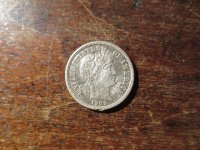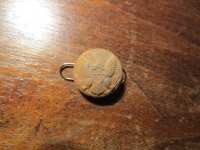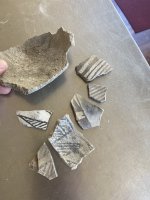Sir Gala Clad
Bronze Member
If I understand it correctly the FE (Ferrous - Iron) Numbers measure how difficult it is for the induced current to flow in an item under the coil (it's resistance) while the Co (Conductive number measure the ireactance to the induced current flowing in at item under a coil.
What I am trying to come to terms with is why one usually gets an FE number of 12 when air testing a target with the search coil several feet above the ground. I know there is pollution (smog) in the air, but not aware of iron in the air or iron in copper/ clad/silver coins.
Stated differently why is an FE number of 12 common for most beaches?
Is there a common CO number, if so what is it?
I assume that the FE number of 12 has to do with the factory calibration by Minelab?
Further, I assume that the discrimation circuits are alway in (never bypassed) , even with a wide open screen as you can here the different tones depenent upon what tone ID profile is selected.
What I am trying to come to terms with is why one usually gets an FE number of 12 when air testing a target with the search coil several feet above the ground. I know there is pollution (smog) in the air, but not aware of iron in the air or iron in copper/ clad/silver coins.
Stated differently why is an FE number of 12 common for most beaches?
Is there a common CO number, if so what is it?
I assume that the FE number of 12 has to do with the factory calibration by Minelab?
Further, I assume that the discrimation circuits are alway in (never bypassed) , even with a wide open screen as you can here the different tones depenent upon what tone ID profile is selected.
Amazon Forum Fav 👍
Last edited:
Upvote
0






